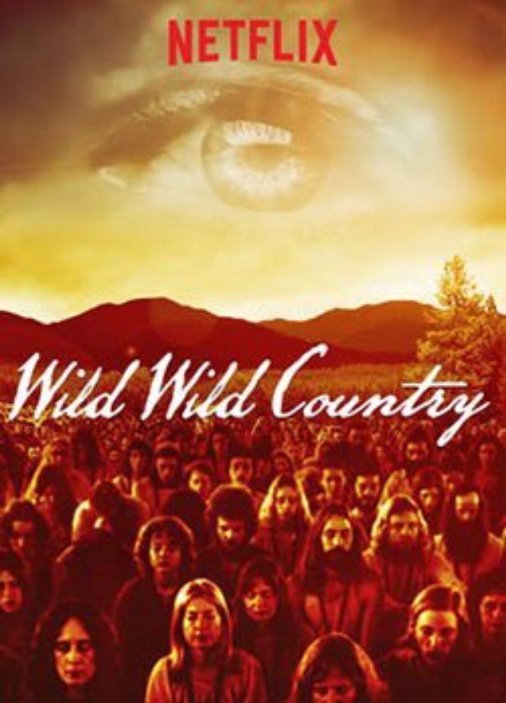
For the residents of the town of Antelope, Oregon who had heard about the horrors from Jim Jones’s death cult in 1978, the arrival of an enigmatic Indian guru named Bhagwan Shree Rajneesh and his flock of followers must have felt like an invasion of some otherworldly presence. Why would these intensely devoted people, nearly all dressed in bright maroon, want to follow this unassuming looking man across the world?
I finally got the chance to check out Wild Wild Country, Netflix’s new documentary on the forgotten history of a commune/city that came to be known as Rajneeshpuram, and its conflicts with not merely the state but the entire United States government.
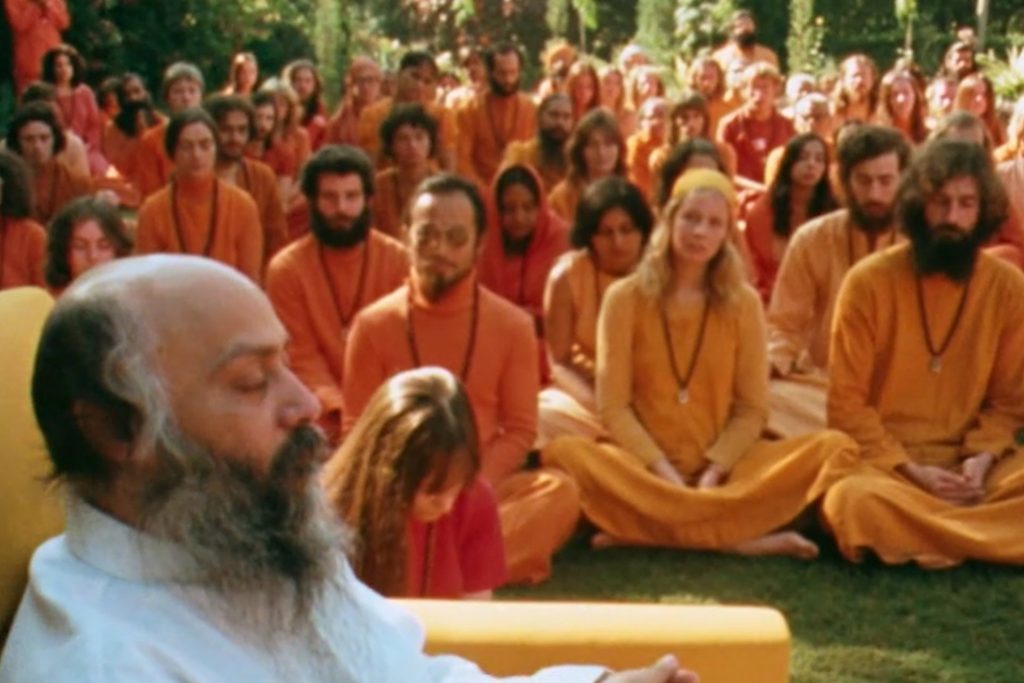
But rather than simply being content as a story about an odd cult, it details the worldview of Bhagwan (also known as “Osho” later in his life) and how it intimidated and inspired those around him, the mentality of many in Antelope on how to deal with their new neighbors. Bhagwan’s sharp secretary Ma Anand Sheela emerges as a major focus, and Country details their relationship and her reaches for power- both within and well beyond the law.
Some scholars have called Rajneesh’s brand of philosophy, which continues to resonate as books of his work are still published today, to be potpourri-like with its combination of both Eastern and Western ideas. Bhagwan’s teachings encouraged free love, open sexuality and didn’t shun materialism, as he encouraged the acquirement of wealth amongst his followers (many of who were part of the Human Potential Movement of the 1960’s/early 1970’s and saw Bhagwan as a next step).
With controversy swirling around his ashram in India, he knew a war chest was needed to fund his compound, and his words were more than enough to inspire a group of thousands from across the globe to join him in their new American ranch.
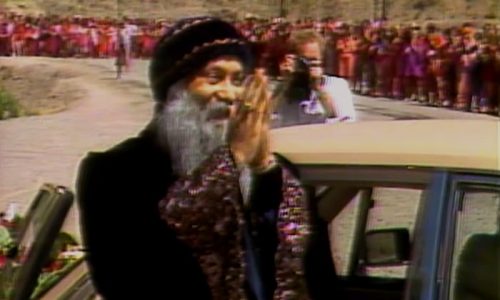
Despite the seemingly good intentions of the Sannyasins, their presence doesn’t sit well with the largely conservative residents of Antelope. Though their efforts have a positive effect on the local wildlife, at first they take exception to their excessive use of the farmland. Soon this escalates into paranoia, wild rumors (among them “blended beavers poured into the water supply”), and then a formal push to have the new community kicked out, followed by a terrroist’s bombing of a Rajneeshian hotel at one point. Clips from news coverage of the day are abuzz about the mysterious, sexual cult suddenly within the very heartland of America.
Sheela and Rajneeshpuram’s mayor John Silvertooth do all they can to protect Bhagwan in the midst of this tense environment, while he continues to entertain more devotees in his ranch. On top of making spectacular entrances in Rolls Royces, some of Bhagwan’s robes and jewelry he sports during his public events put new meaning to the term “Ric Flair Drip”.
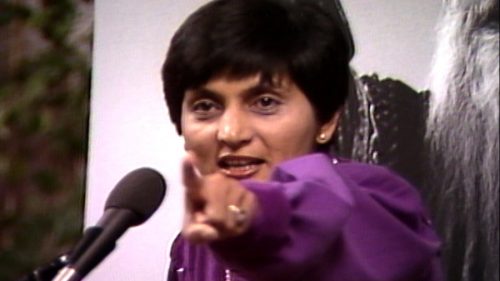
Ma Anand Sheela is basically the documentary’s viewpoint character. Through interviews from Switzerland where she works as a nurse, there’s a fair amount of time chronicling her management of Rajneeshpuram and the various plans she enacted to protect it. These include her play for power in Antelope’s city council, spying, incorporating the homeless into their community and registering them to vote on their behalf, weaponizing the group with semi-automatic guns, and even orchestrating a spread of salmonella in local salad bars.
While denying the most damning allegations against her as she makes her way through a publicity tour, she’s unapologetic about her loyalty to Rajneeshpuram and Bhagwan, never once willing to mince her words on the mistreatment and bigotry directed towards them. If she has to take over the town to secure their presence, for her the ends justify the means.
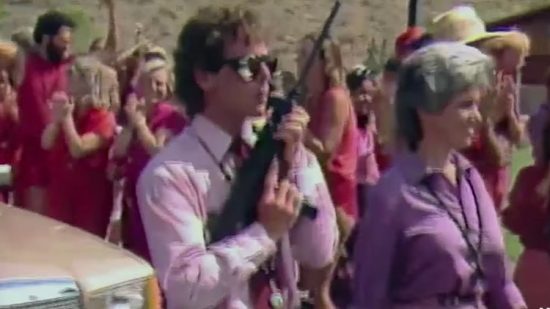
When her influence is challenged by other members and the balance of power shifts, Sheela makes a fateful decision, and the Bhagwan ends his three-year-long public silence. He methodically strips the Rajneesh community of its public religious implications, and his shift in demeanor is striking.
A more manipulative, angrier side of him emerges as the two begin to publicly turn on one another, arguing over exactly which one was responsible for Rajneeshism. Meanwhile, the government continues to bear down on the commune and sets in motion a plan to have Bhagwan deported, and both him and Sheela remain entangled as the situation reaches a boiling point.
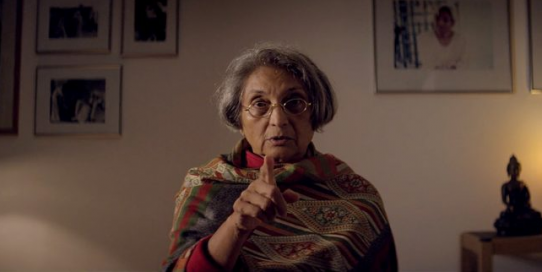
What’s really enjoyable about Country is how it’s willing to be objective. Antelope citizens, Rajneesh followers, various journalists and attorney generals are interviewed for this documentary, so there’s a wide variety of perspectives on display.
As it’s such a complex situation- neither the regressive attitudes of many citizens nor Sheela’s long rap sheet are brushed under the rug- this is a huge benefit because there’s no sense of bias towards any particular side.
The series’ main goal is pretty much to chronicle the controversy in Oregon, which is more than enough to fill six dramatic hour-long episodes. Only a brief discussion in the first chapter is what we mainly get of Osho’s teachings, but it’s easy to tell in Silvertooth’s voice the impact he had on not just his life, but all of his followers.
Still, the guru is given an equally fair treatment by this show, warts and all, so it isn’t out to necessarily lionize him or the overbearing authorities who systematically targeted the Sannyasins.
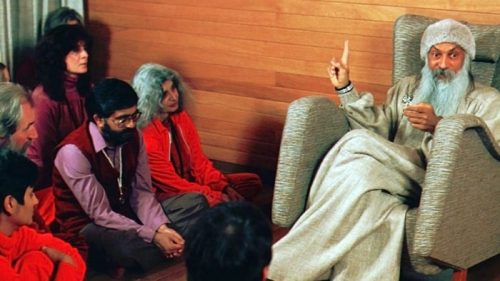
Wild Wild Country is not a documentary that will allow you to easily pick a side, because there aren’t enough “wilds” in the title to aptly describe how bizarre and epic this real-life story is, and the cultural and social impact it made on this country.
Not content to be a simple tale of a group of hippies and the country folk who didn’t want them around, directors Maclain and Chapman Way have put together a rather thrilling and unexpectedly emotionally involving show, covering a wide array of subjects within one twisted situation. Easily recommended.
